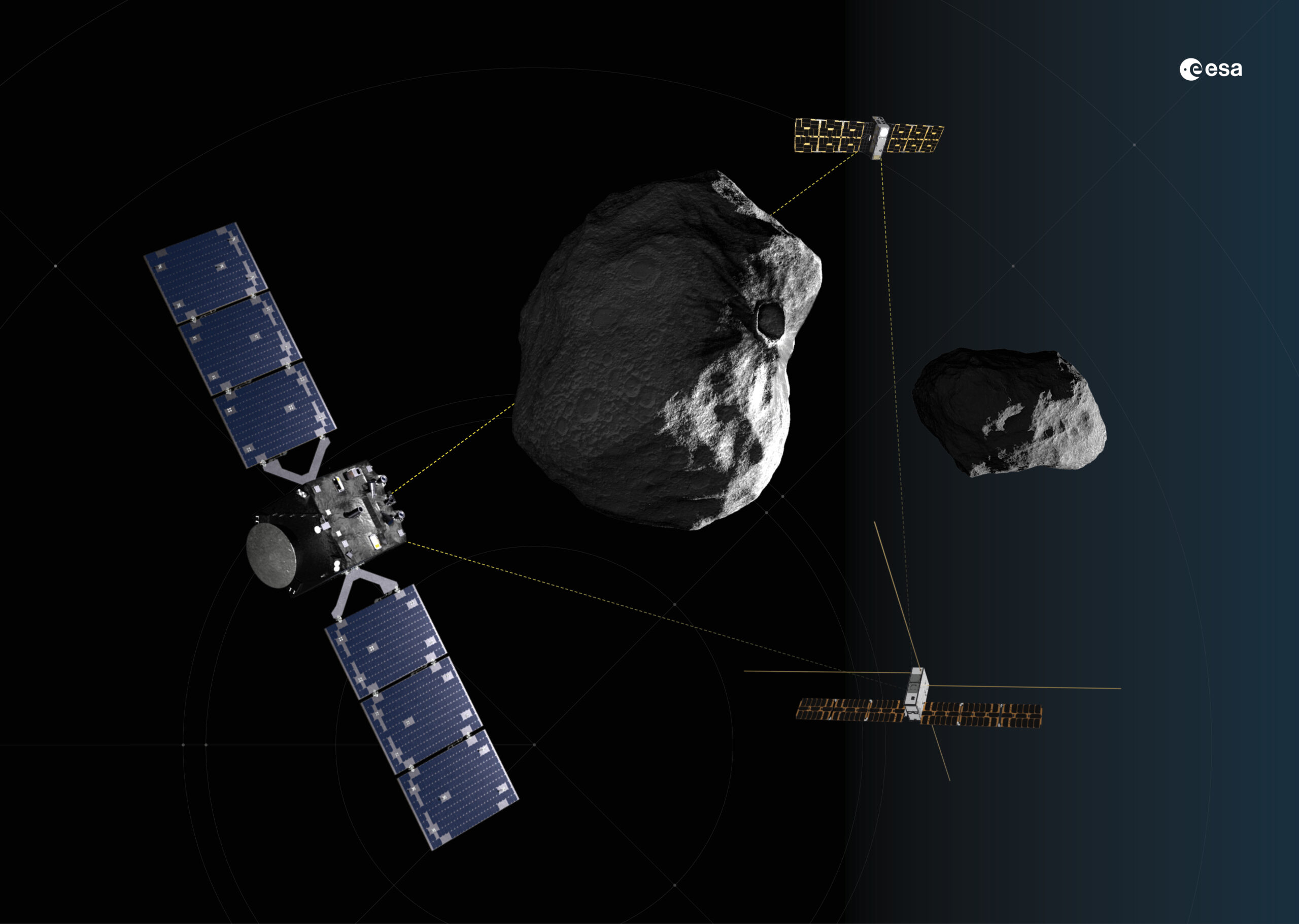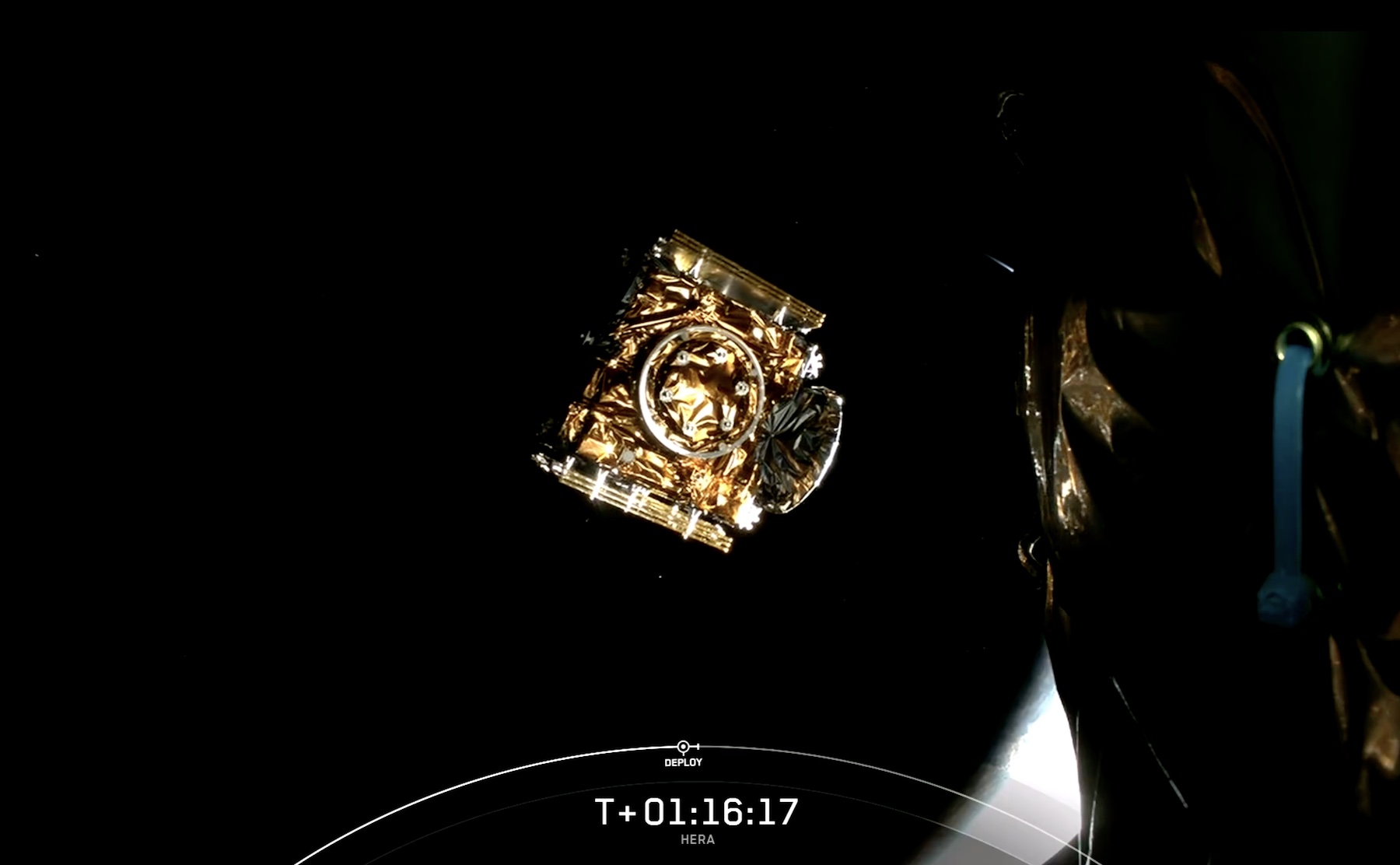“This is the first time that we send a spacecraft to a small body, which is actually a multi-satellite system, with one main spacecraft and two CubeSats doing closer proximity operations,” Michel said. “This has never been done.”

Credit:
ESA-Science Office
Artist’s illustration of the Hera spacecraft with its two deployable CubeSats, Juventas and Milani, in the vicinity of the Didymos binary asteroid system. The CubeSats will communicate with ground teams via radio links with the Hera mothership.
Credit:
ESA-Science Office
One source of uncertainty, and perhaps worry, about the environment around Didymos and Dimorphos is the status of the debris field observed by Hubble a few months after DART’s impact. But this is not likely to be a problem, according to Kueppers.
“I’m not really worried about potential boulders at Didymos,” he said, recalling the relative ease with which ESA’s Rosetta spacecraft navigated around an active comet from 2014 through 2016.
Ignacio Tanco, ESA’s flight director for Hera, doesn’t share Kuepper’s optimism.
“We didn’t hit the comet with a hammer,” said Tanco, who is responsible for keeping the Hera spacecraft safe. “The debris question for me is actually a source of… I wouldn’t say concern, but certainly precaution. It’s something that we’ll need to approach carefully once we get there.”
“That’s the difference between an engineer and a scientist,” Kuepper joked.
Scientists originally wanted Hera to be in the vicinity of the Didymos binary asteroid system before DART’s arrival, allowing it to directly observe the impact and its fallout. But ESA’s member states did not approve funding for the Hera mission in time, and the space agency only signed the contract to build the Hera spacecraft in 2020.
ESA first studied a mission like DART and Hera more than 20 years ago, when scientists proposed a mission called Don Quijote to get an asteroid deflection. But other missions took priority in Europe’s space program. Now, Hera is on course to write the final chapter of the story of humanity’s first planetary defense test.
“This is our contribution of ESA to humanity to help us in the future protect our planet,” said Josef Aschbacher, ESA’s director general.

